- ↑ Sometimes spelled "LeFevre".
- ↑ Some sources indicate that Le Fevre was a second lieutenant, but the abstract of his service indicates that he had not received his commission by the time he was discharged.
Related Research Articles
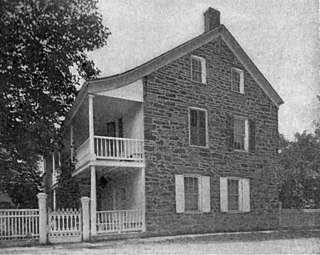
Louis Du Bois was a Huguenot colonist in New Netherland who, with two of his sons and nine other refugees, founded the town of New Paltz, New York. These Protestant refugees fled Catholic persecution in France, emigrating to the Rhenish Palatinate and then to New Netherland, where they settled in Wiltwyck and Nieuw Dorp (present-day Hurley, New York, settlements midway between New Amsterdam and Beverwyck before ultimately founding New Paltz.
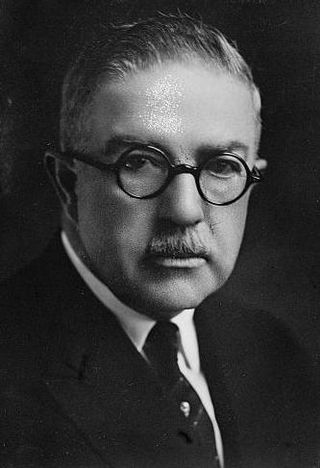
John Quayle was an American businessman and politician from Brooklyn, New York. He was most notable for his service as a U.S. Congressman representing the 7th District of New York in the United States House of Representatives for four terms, serving from 1923 to 1930.

Chester Charles Gorski was an American politician from Buffalo, New York. A Democrat, he served one term in the United States House of Representatives from 1949 to 1951, and was the longtime president of the Buffalo Common Council.

Dean Park Taylor was an American attorney and politician from Troy, New York. A Republican, he was most notable for his service as a United States Congressman for 18 years (1943–1961) and chairman of the New York Republican State Committee (1953–1954).
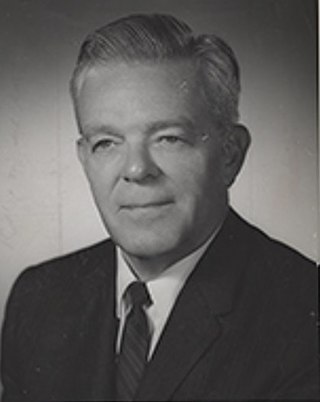
Leo William O'Brien was an American journalist, radio and television commentator, and politician. A Democrat, he was most notable for his seven terms of service as a member of the United States House of Representatives from New York from 1952 to 1966.

Michael Joseph Kennedy was an American businessman and politician. He was a member of the United States House of Representatives from the state of New York from 1939 to 1943.

Josiah Hasbrouck was a United States representative from New York. Born in New Paltz, he completed preparatory studies and conducted a general merchandising business. He was a second lieutenant in the Third Regiment of Ulster County Militia in 1780, and was supervisor of New Paltz from 1784 to 1786 and in 1793, 1794, and 1799 to 1805. He was a member of the New York State Assembly in 1796, 1797, 1802, and 1806.
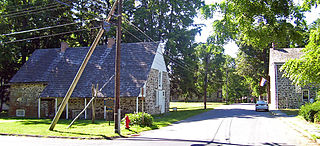
Historic Huguenot Street is located in New Paltz, New York, approximately 90 miles (140 km) north of New York City. The seven stone houses and several accompanying structures in the 10-acre National Landmark Historic District were likely built in the early 18th century by Huguenot settlers fleeing discrimination and religious persecution in France and what's now southern Belgium. After negotiating with the Esopus Indians, this small group of Huguenots settled on a flat rise on the banks of the Wallkill River in 1678. The settlers named the site in honor of Die Pfalz, the region of present-day Germany that had provided them temporary refuge before they came to America. Archaeological finds indicate that the immediate area settled by the Huguenots was occupied by Native Americans prior to European contact. The site is one of the oldest continuously inhabited settlements in the United States.
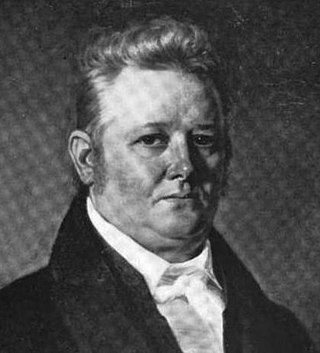
Abraham Joseph Hasbrouck was a United States representative from New York and a slaveholder.
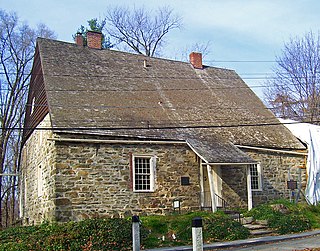
The Jean Hasbrouck House is a historic house on Historic Huguenot Street in New Paltz, New York. Built in 1721, it is one of the best examples of colonial Dutch architecture in stone in the United States. The house is a National Historic Landmark and is part of the larger Huguenot Street Historic District, also a National Historic Landmark.
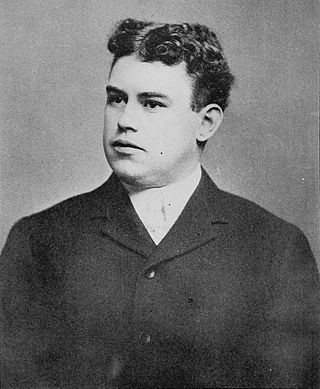
Frank Jacob Le Fevre was a U.S. Representative from New York, son of Jacob Le Fever.
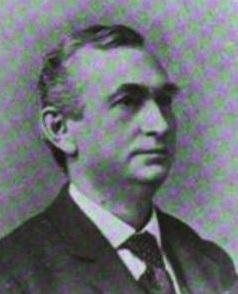
Jacob LeFever was a U.S. Representative from New York.

The Wallkill Valley Rail Trail is a 23.7-mile (38.1 km) rail trail and linear park that runs along the former Wallkill Valley Railroad rail corridor in Ulster County, New York, United States. It stretches from Gardiner through New Paltz, Rosendale and Ulster to the Kingston city line, just south of a demolished, concrete Conrail railroad bridge that was located on a team-track siding several blocks south of the also-demolished Kingston New York Central Railroad passenger station. The trail is separated from the Walden–Wallkill Rail Trail by two state prisons in Shawangunk, though there have been plans to bypass these facilities and to connect the Wallkill Valley Rail Trail with other regional rail-trails. The northern section of the trail forms part of the Empire State Trail.

The John A. Lafevre House and School is located along NY 208 in the town of Gardiner, New York, United States. It is often believed to be in New Paltz as it is within that town's ZIP Code. The house is a stone structure dating to 1772; the school was built in 1835 and remained in use for almost a century. Both are well-preserved examples of their type of building and were listed on the National Register of Historic Places in 1989.

New Paltz is a village in Ulster County located in the U.S. state of New York. It is approximately 80 miles (130 km) north of New York City and 70 miles (110 km) south of Albany. The population was 7,324 at the 2020 census.

New Paltz is an incorporated U.S. town in Ulster County, New York. The population was 14,407 at the 2020 census. The town is located in the southeastern part of the county and is south of Kingston. New Paltz contains a village, also with the name New Paltz. The town is named for Palz, the dialect name of the Palatinate, called Pfalz in standard German.

New Paltz station is a former train station in the village of New Paltz in Ulster County, New York. The building was the first of two railroad stations constructed in the town of New Paltz, and it is the only former Wallkill Valley Railroad station standing at its original location.
Abraham A. Deyo was an American politician from New York.
The Hasbrouck family was an early immigrant family to Ulster County, New York, and helped found New Paltz, New York. The Hasbrouck family were French Huguenots who fled persecution in France by moving to Germany, and then the United States. Two brothers, Jean II and Abraham, are the ancestors of almost all individuals in the United States with the last name "Hasbrouck," or some variation.

The Abraham (Daniel) Hasbrouck House is a historic stone house located at 94 Huguenot Street in New Paltz, New York, United States. Built in three phases between 1721 and 1734, it is significant for its association with the early settlement of New Paltz by French Huguenots and as an example of evolving architectural styles in the Hudson Valley.
References
- 1 2 3 4 5 U.S. Army Adjutant General (March 26, 1921). "New York Abstracts of World War I Military Service, 1917-1919, Entry for Jay LeFevre" . Ancestry.com. Lehi, UT: Ancestry.com LLC. Retrieved August 20, 2024.
- 1 2 3 4 5 6 7 8 9 10 11 12 13 14 15 "Jay LeFevre Dies; Former Congressman, 76". Poughkeepsie Journal . Poughkeepsie, NY. April 27, 1970. p. 15 – via Newspapers.com.
- ↑ "New Paltz: Jay LeFevre". Daily Freeman . Kingston, NY. May 26, 1914. p. 2 – via Newspapers.com.
- ↑ Year Book of the Holland Society of New-York. New York, NY: The Holland Society of New York. 1919. pp. 184–185 – via Google Books.
- ↑ United States House Committee on Interior and Insular Affairs (May 2, 1950). "Hawaii Statehood". Hawaii Statehood: Hearings Before the United States House Committee on Interior and Insular Affairs. Washington, DC: U.S. Government Printing Office. pp. 120–121 – via Google Books.
- 1 2 3 4 5 6 Joint Committee On Printing, United States Congress (1971). Biographical Directory of the American Congress, 1774-1971. Washington, DC: U.S. Government Printing Office. p. 1279 – via Google Books.
- ↑ "Wedding: Le Fevre–Hiltebrant". New York, NY. New York Herald. January 5, 1920. p. 4 – via Newspapers.com.
- 1 2 McKinney, Craig (January 15, 2020). "As I See It: New Paltz has grown" (PDF). Southern Ulster Times. Milton, NY. p. 9.
- ↑ Stuart, Shane. "Help Preserve the 1799 LeFevre House". Huguenot Street.org. New Paltz, NY: Historic Huguenot Street. Retrieved August 20, 2024.
External links
Jay Le Fevre | |
|---|---|
 | |
| Member of the U.S. House of Representatives | |
| In office January 3, 1943 –January 3, 1951 |